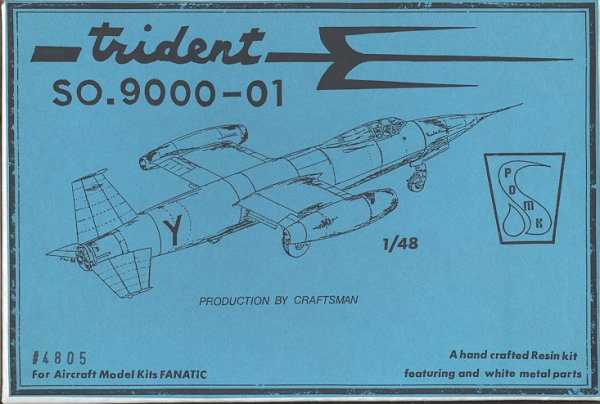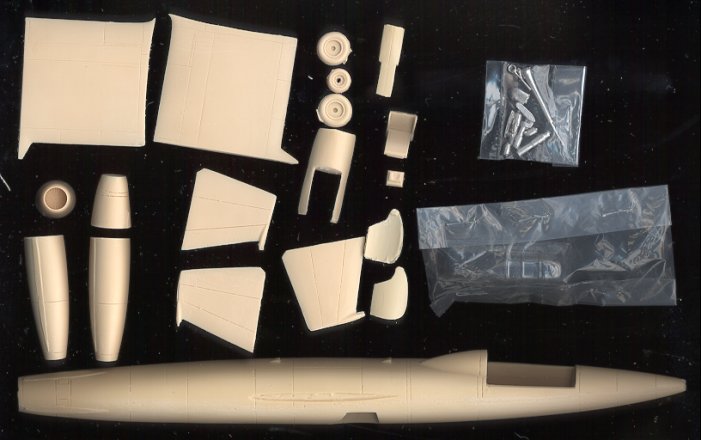
| KIT: | Pend Oreille 1/48 SO.9000-01 Trident |
| KIT # | 4805 |
| PRICE: | $30 |
| DECALS: | None |
| REVIEW & | |
| NOTES: | Resin kit with white metal and vac canopy |

| HISTORY |
Having darn little info on this aircraft, I'll quote out of the Observersbook of aircraft: 1958. "One of the first mixed power interceptorfighters, the Trident II was flown for the first time on July 17, 1955. Apreproduction order for ten machines was placed with the French Air Ministry inJanuary 1956, but this has been reduced to six aircraft. There are now likely tobe of the Trident III type which has modified and strengthened undercarriage andafterburning Gabizos delivering a combined thrust of 6, 660 lbs." This infoand the following specs are for the SO.9050 Trident II, but the prototype kittedshould be similar.
Max speed 1,320 mph at 40,000-70,000 feet. Initial rate of climb20,000 feet per minute. Time to 50,000 feet; 2.5 minutes. Armament: one Matraguided missile. Power plants 1 6,615 lbs of thrust SEPR-631 liquid fuel rocketmotor and two GAMD Viper or Turbomeca Gabizo turbojets.
As you can see from the specs, the Trident was developed to be apoint defense fighter. Similar to the Me-163 in approach in that the main motiveforce is a liquid fuelled rocket. However the wing-tip mounted small turbojetswould provide take off and cruise power. They would also allow for anormal landing after the rocket has expended all of its fuel. Needless to say,the program was eventually terminated as it was seen that while the aircraftwould have been effective, it just wasn't the best way to do this kind ofmission. This was especially true once the Mirage III had flown as the Miragewas a normal jet fighter that had the ability to add on a small SEPR rocketmotor to help it get to altitude quickly.
| THE KIT |

Actually,building the kit should not really be a problem at all due to the simpleconstruction and rather straight-forward assembly sequence. As you can see fromthe image to the right, not much to the kit and lots of room for any additionaldetailing that you might want to do to it. A problem forsome might be that the kit has no decals. The box art shows just a letter Y onthe rear fuselage. The image in the Observers book for the Trident II shows atri-colored rudder and national insignia in addition to the rear fuselage letter.To find out what the prototype (which this kit is) carried in the way ofmarkings, some research is going to be needed. As toavailability of the kit, that is an unknown. I bought this kit nearly 2 yearsago and have just now gotten to reviewing it. Looks like it will be an easy REFERENCES Observers book of Aircraft, 1958 edition Review kit courtesy of me and my wallet! If you would like your product reviewed fairly and quickly by asite that has over 2,800 visits a day, please contactme or see other details in the